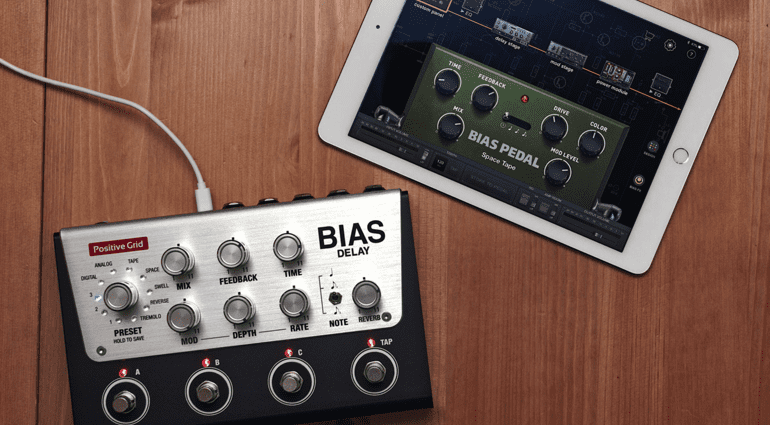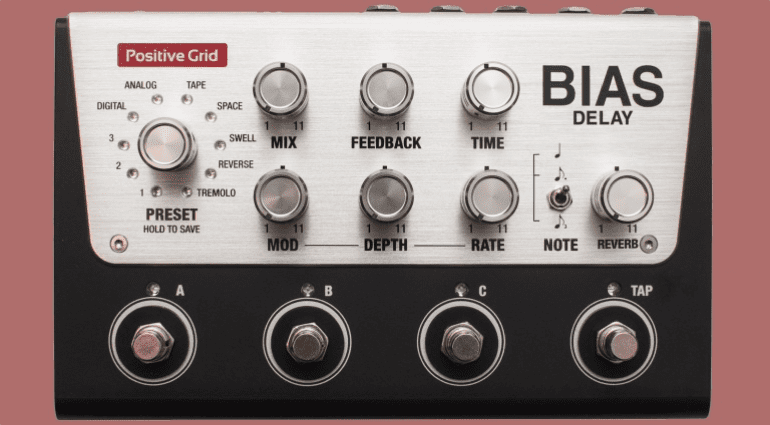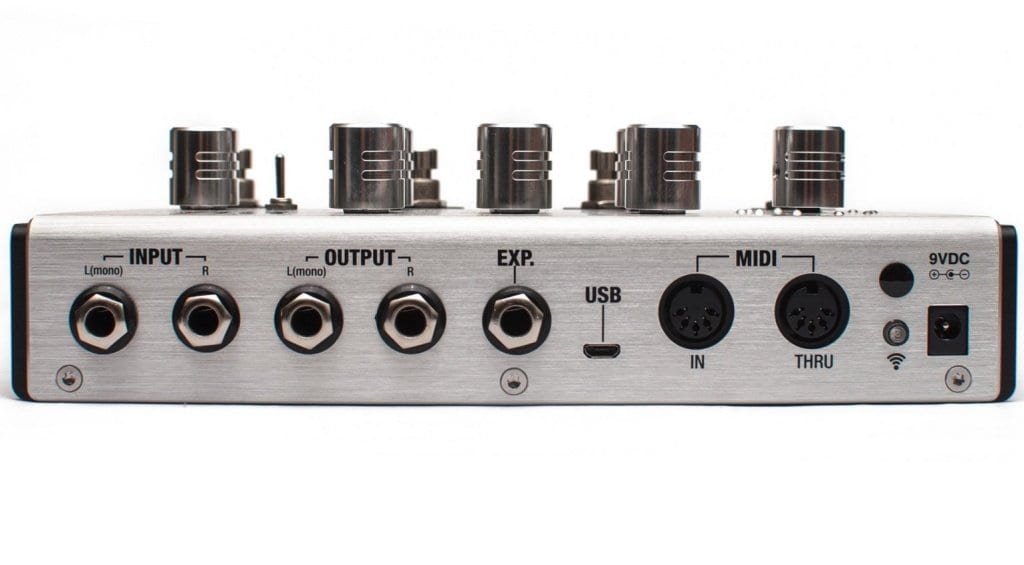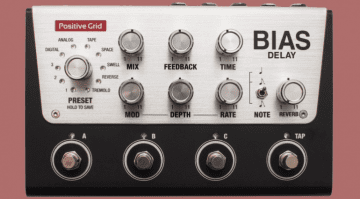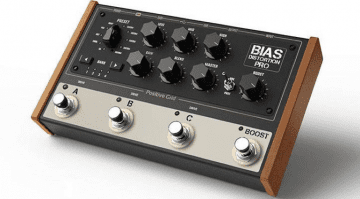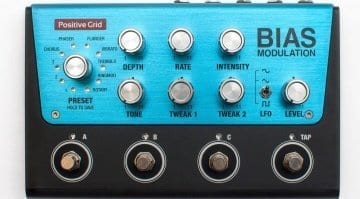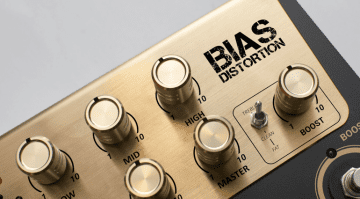Positive Brid BIAS Delay pedal: Echoes of the same?
BIAS Delay more of the same from Positive Grid
Positive Grid’s BIAS Delay pedal is a follow-on from the company’s hybrid of hardware and software, as used in their BIAS Distortion pedal and their BIAS Head amps. But why should you consider another hybrid?
Multi Delays
The BIAS Delay has 10 presets which can be selected via the rotary control, plus four foot switches for control and tap tempo. Fine adjustments can be made via one of the seven knobs: Mix, Feedback, Time, Mod, Depth, Rate and Reverb. The Rate control can then be sub-divided using a three-way switch.
The pedal can also be tweaked via software in your DAW. You can store and trade sounds on Positive Grid’s cloud-based online ToneCloud system, so it follows the same ideas as their previous products.
You can edit via your PC or Mac and, like the BIAS Distortion, you can also use an app on your iPad or iPhone as well.
On the rear you get connectors for Dual Mono In and Out, Expression In and a Micro USB, combined with a MIDI In and Thru port. So you should be able to integrate it into most rigs easily enough. The BIAS Delay also features Bluetooth. The back panel has an On/Off switch as well, similar to the BIAS Distortion pedal.
Do you need one?
The Positive Grid Bias Delay is an interesting concept, I personally haven’t seen or heard anything yet that would make me part with my money for one. I suppose it will need to have some fantastic ‘stand out’ sounds to elevate it to a must-have. At the moment I feel it is flexible enough, just a tad bland for my tastes.
If you play in a covers band, or just use lots of different delays live or you just love to tweak via software, then this could well be the delay pedal for you, though. I think it is too early to tell if this new delay pedal will really stand out from the crowd, however.
RRP $349
BIAS Delay site
You are currently viewing a placeholder content from YouTube. To access the actual content, click the button below. Please note that doing so will share data with third-party providers.
